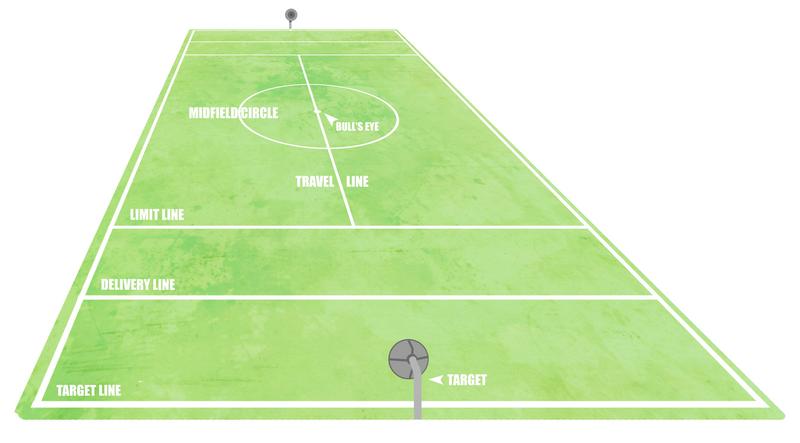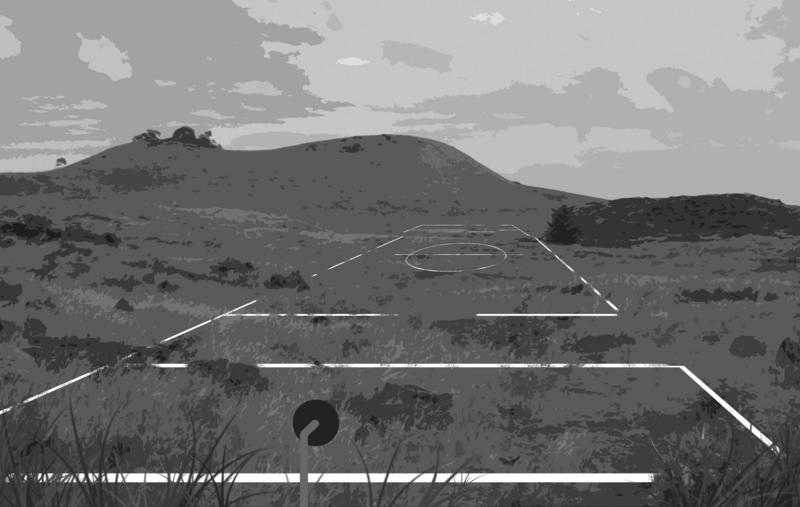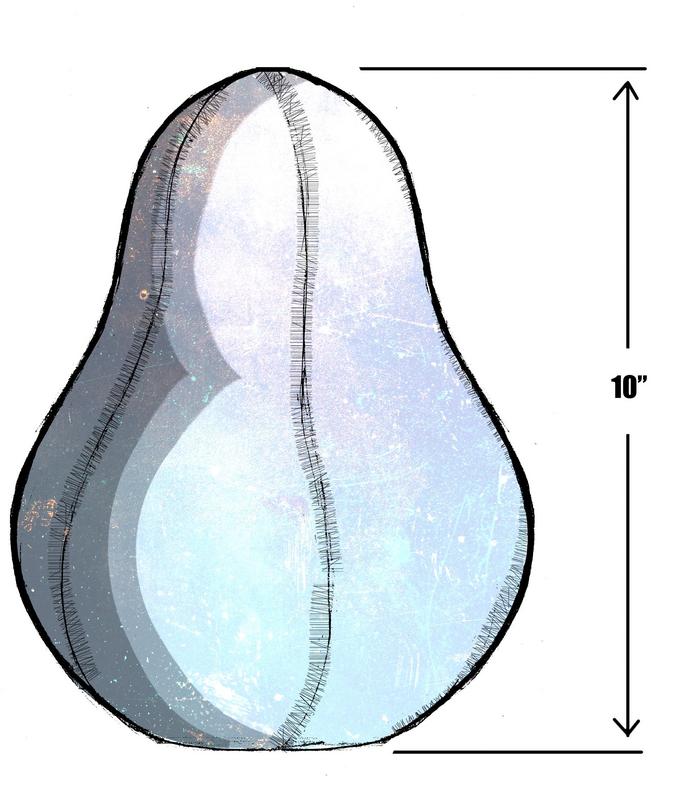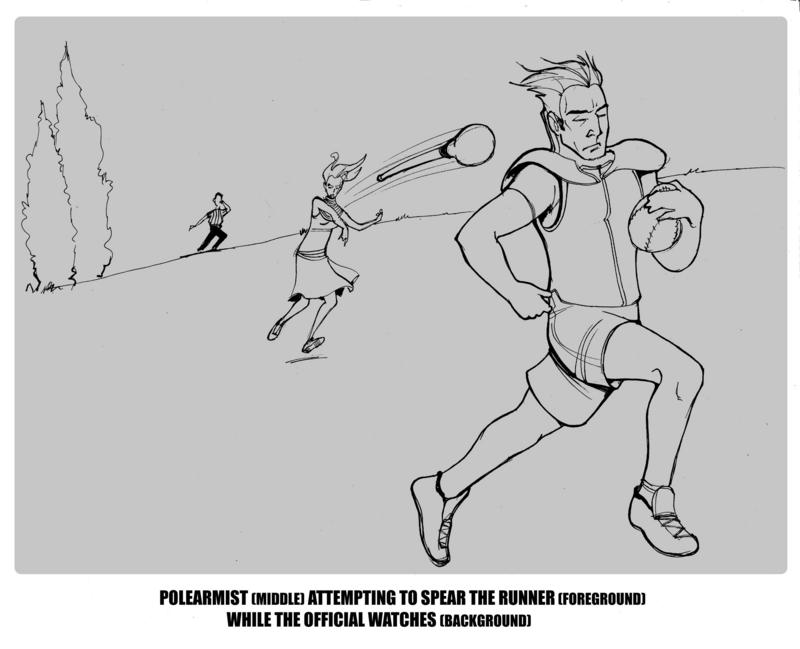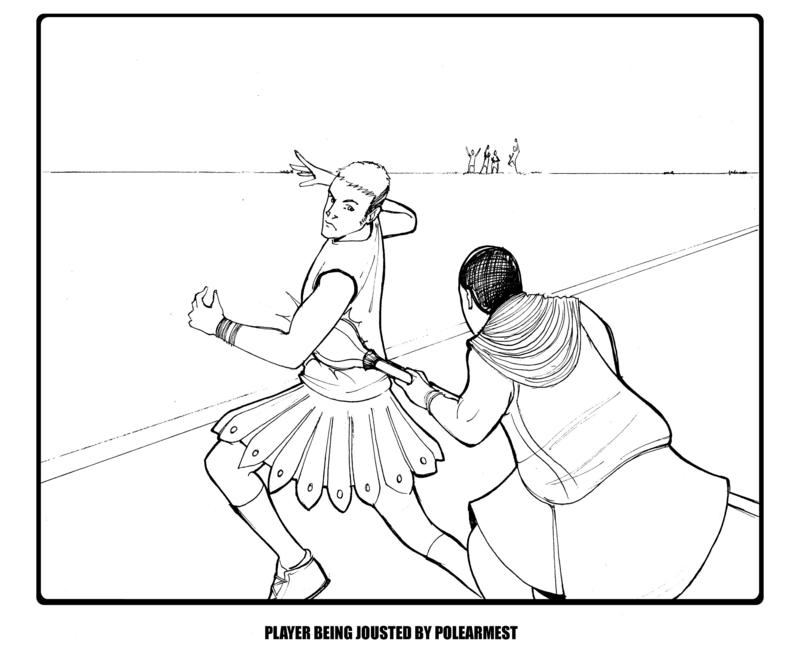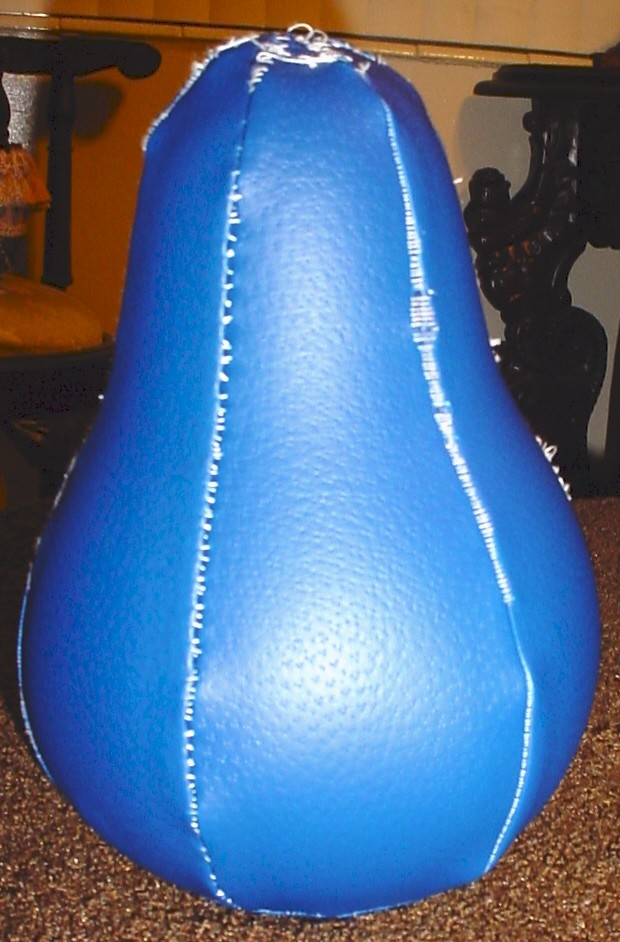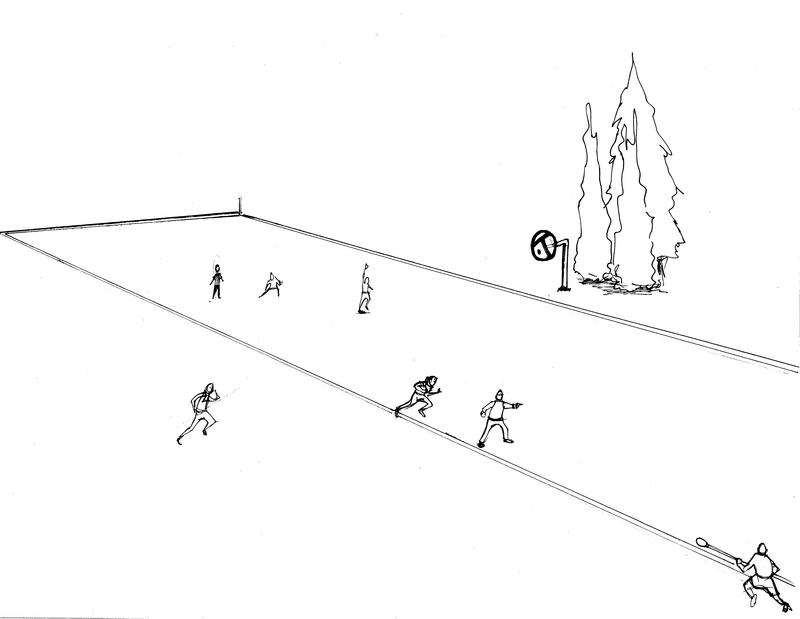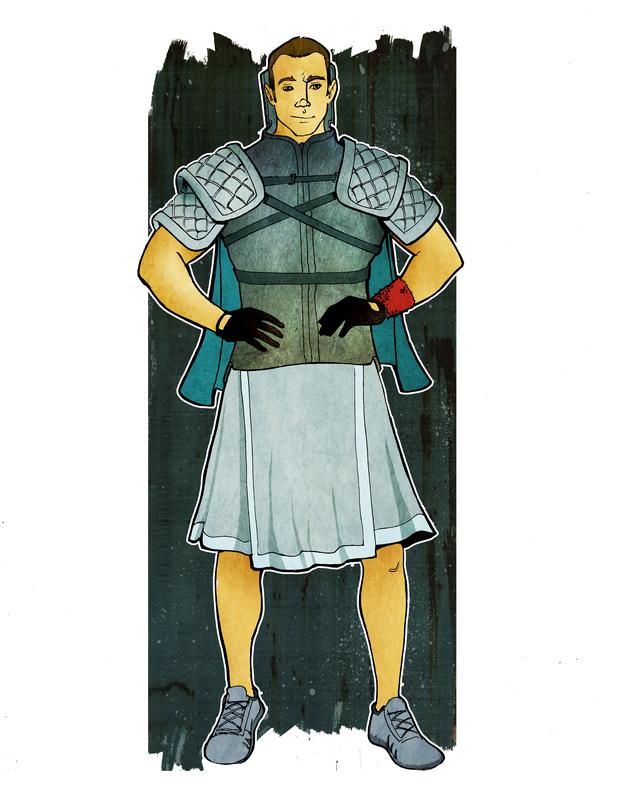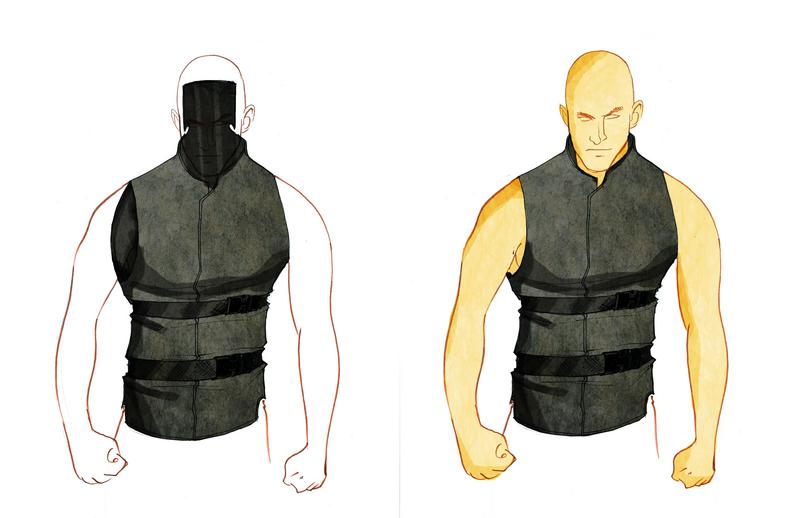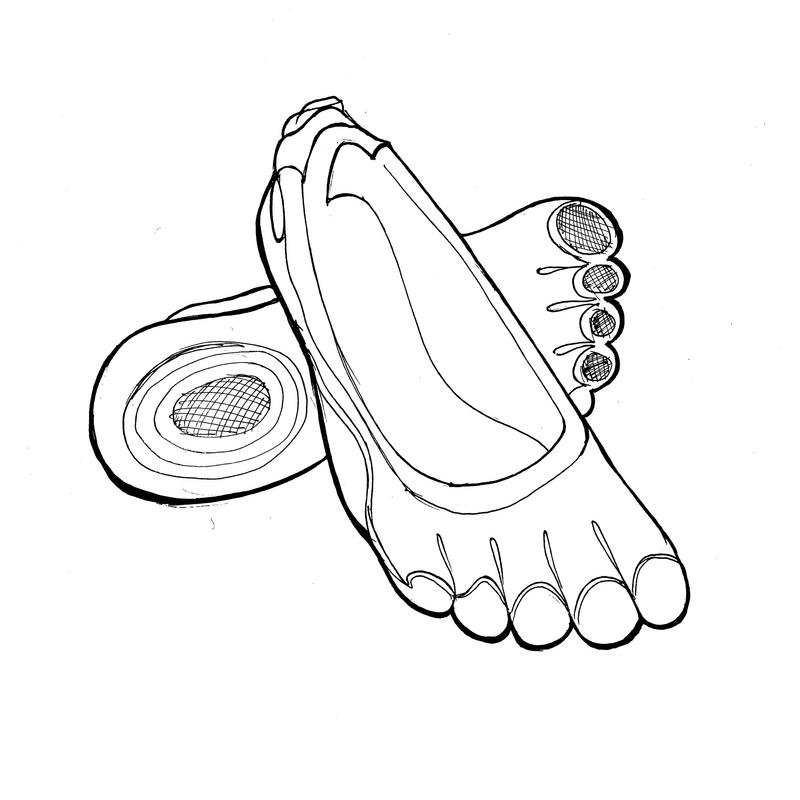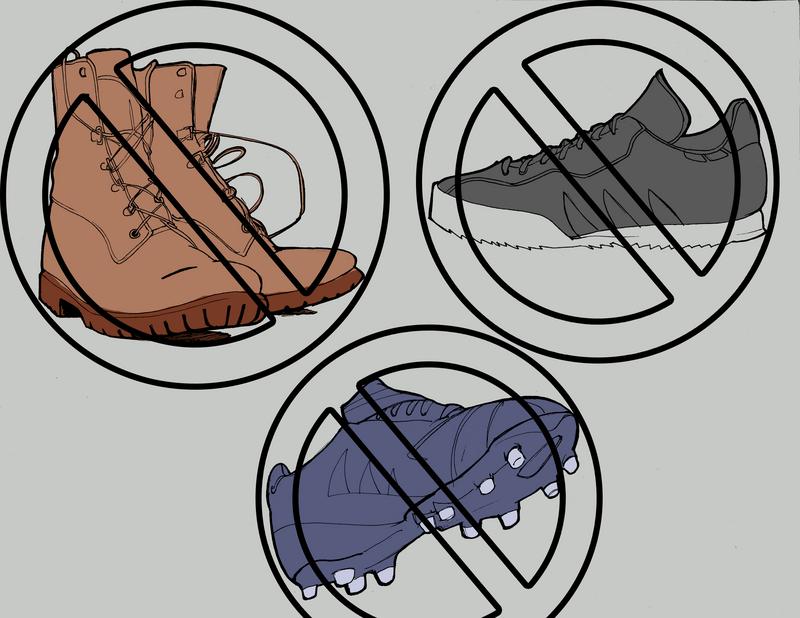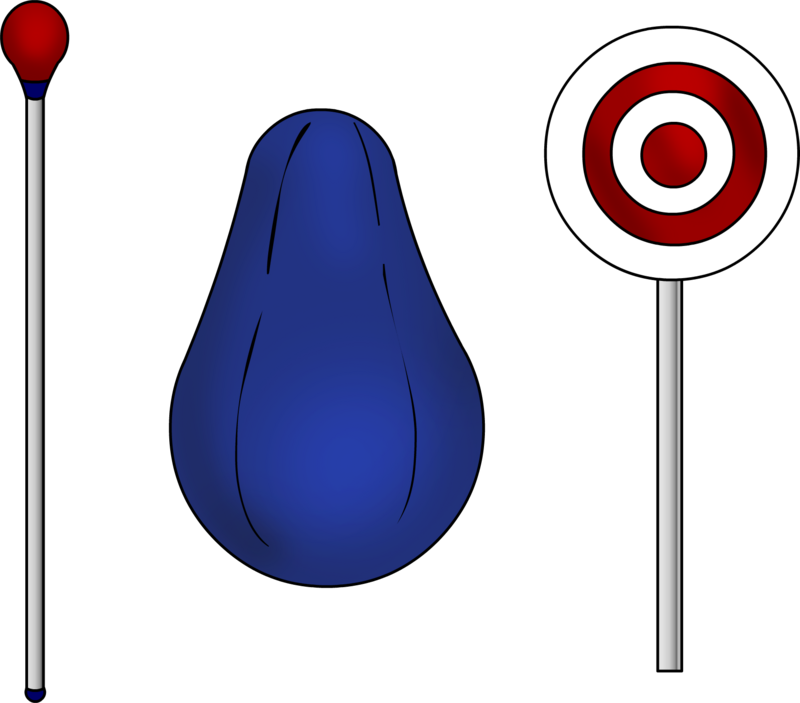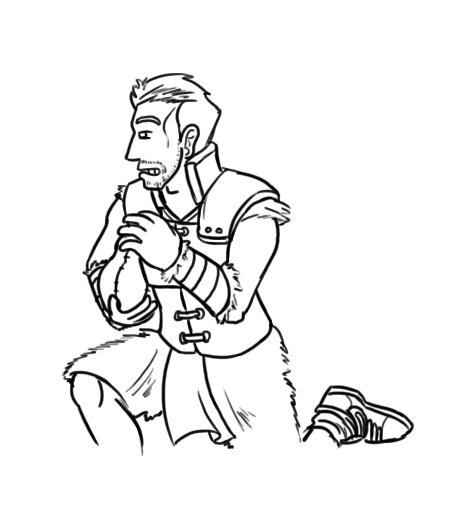The playing area shall contain two targets.
Each of the two targets shall be placed in the middle at the far ends of the playing area directly over the Target Lines.
Each target shall be located eight feet high on center directly over the Target Line and have a four foot diameter.
Page Two
The dimensions of the playing field will vary according to the age group and/or skill level of the players. The younger or less adept players may use a smaller playing area. If the game is played on natural terrain then the field may be encumbered by way of natural causes found in Mother Nature such as ponds, trees, logs, hills, rocks, etc.
Natural Terrain with hills, grass, rocks, etc.
Description:
Polearmball is a team sport. The on-foot version of the game is played by two teams on a court, or grassy playing field, or man-made or natural terrain. Each team may have as few as four (4) players or as many as twenty (20). Each team must have an equal quantity of players. Polearmball with one exception called "Flinging" is for the most part a stand-up game whereby the players remain on their feet. The object of the game is to score more points than the other team by way of various options open to both teams at the same time on each play.
Polearmball requires two (2) implements.
The game uses both a polearmball and a polearm.
A polearmball is a unique ball designed especially for this sport. The polearm is also a unique device designed especially for this sport. Both the polearmball and the polearm will be used to score points.
Scoring Points
Points are awarded according to the rules when under special circumstances the ball is hit (speared) by an airborne polearm.
Points are awarded according to the rules when under special circumstances a player is hit (jousted) with the polearm by another player (Polearmist) who is in possession of the polearm.
Points are awarded according to the rules when under special circumstances a player is hit (speared) by an airborne polearm.
Points are awarded according to the rules when under special circumstances a player called “the Runner” is running with the ball and scores a Delivery (running across a Delivery Line with the ball). Additionally the points that a Delivery are worth may increase or decrease under special circumstances.
Points are awarded according to the rules when under special circumstances a player in possession of the ball is encapsulated (surrounded) by players of the opposing team.
Points may also be awarded to the Polearmist who is judged according to the quality of his featured performance for up to sixty (60) seconds at the start of each round of play.
For more details about scoring points, read on...
Illustration of a Polearmball
The Polearm Used In Polearmball Is Called A Javel
Prototype Created 1/5/2011
The Polearm designed to be used in Polearmball can be compared in concept to a pole used in jousting or a spear used by ancient hunters. Unlike a lance or spear, the polearm used in Polearmball should have a resilient head or globe able to forebear the impact of striking a player's torso. The greater surface area of a globe is able to dissipate the forces of impact over a greater surface area which it hits.The polearm should be aerodynamically designed and balanced to travel head first in the air as a projectile. It should also be designed to absorb the impact of hitting a player so as to prevent impact injuries. It should be lightweight and padded and somewhat flexible. In future variations of the polearm it is possible to build-in an internal shock absorber. Polearms for younger age groups can be made with lighter weight materials such as Styrofoam or other synthetics to help prevent injury and minimize the impact of a strike. A polearm intended to be used for Polearmball should have similar characteristics to the Prototype in the image above and can be made of various materials that affect rigidity, flexibility, weight, and purpose. Polearms designed for Polearmball may be constructed for training purposes and thereby be constructed in a more forgiving manner than a game-ready polearm. The head may be softer, and the entire polearm may be made out of lighter lightweight, resilient, flexible or pliable materials. In all cases the polearm should be designed so as there is almost no chance of impalement from the front or back end of the pole.
Please note:
The prototype shown above is not a game-ready polearm. The device only represents the concept and the design and the principles that should go into the engineering of a polearm to be used in the sport of Polearmball. However, we did test this prototype and was able to use it in a fully functional manner. It works.
Prototype Cut and Sewn by Hand from Vinyl
Only one polearmball and only one polearm will be used in this version of the game. During a rout or scrimmage or round (until sides switch) one team will control and possess the polearmball and the other team will control and possess the polearm. The team in possession and control of the polearmball will attempt to score a Delivery (running across a delivery line holding the polearmball) by way of their designated "Runner." The opposing team controlling the polearm during that same round, scrimmage, or rout will attempt to prevent the Delivery. The opposing team will also attempt to make a Kill (joust, spear, fling, or encapsulate the Runner) in order to switch sides. Note: the Runner is not necessarily in possession of the polearmball at all times. According to the rules a Runner is designated at the beginning of each round and he/she remains the designated Runner throughout that round. According to the rules only the Runner may score a Delivery and must be in possession of the polearmball when he/she crosses the Delivery Line.
Rough sketch of practice session showing Runner making a delivery by crossing a Delivery Line
The Implements:
Polearmball uses a device called a polearm or Javel. The polearm is designed for Polearmball in such a way so that it does not inflict injury. It is a forgiving device made from lightweight materials and soft enough to prevent bodily harm. In Polearmball the polearm acts like a spear or lance used in jousting or may also act as a projectile like a javelin. The polearm in Polearmball may either be thrown as a projectile or held and used to jab (joust) an opponent.
The Polearmball is a ball made from typical ball materials such as rubber, vinyl, or leather. It has a unique pear shape and is a ball that is fun to throw. However, practice will be necessary to become accustomed to a shape that other typical balls do not have. The polearmball is somewhat shaped like a tear drop, or bell vase, pear, or bowling pin, or avocado.
The Target is a device which holds either paper, Velcro connected material, or magnetized material stretched across a circular ring four feet in diameter. The Target is held eight feet in the air on-center. When the Target is hit by the polearm then the Velcro attached material or magnet held material, or paper which is stretched over the four foot wide circular ring will come apart or “tear” and this represents damage to the runner’s village in the role playing aspect of the game. A more complicated Target may be electronic with bells and whistles so-to-speak, or fold back like a target in a carnival arcade, or drop straight down like a guillotine. The concept is to represent damage to the village and delivery in the role playing aspect of the game.
The Runner will wear mandatory protective equipment so as to mitigate possible injuries from a polearm which may hit his head, neck, or torso from behind. This garb will also serve to identify the Runner on the field at all times. This protective equipment may also be fashionable to match the team's athletic-wear theme and decorated in a way that magnifies the bravado which players will want to display in order to intimidate the opposing team.
Footwear:
Due to acrobatic and Parkour maneuvers used in the sport of Polearmball pertaining to free-running over a blockade or ensuing encapsulation, it is necessary that all players wear soft soled flat bottom shoes. Ballet slipper style shoes are OK but more substantial footwear which are flat on the bottom and somewhat pliable would also be permissible. Cheerleading shoes may be ideal. It is important to mitigate the possibility that a Runner or player catapulting over a blockade or ensuing encapsulation may clip the head of a player below him with his feet as he goes over the top. Cleats or heavy footwear is not allowed which would imperil the players below who have formed a human chain by the player who is in-flight overhead.
You are on page two (2)
No No No
Maybe...
Target
Polearmball
Polearm (Javel)
Runner wears a protective vest that identifies him/her on the playing field.
